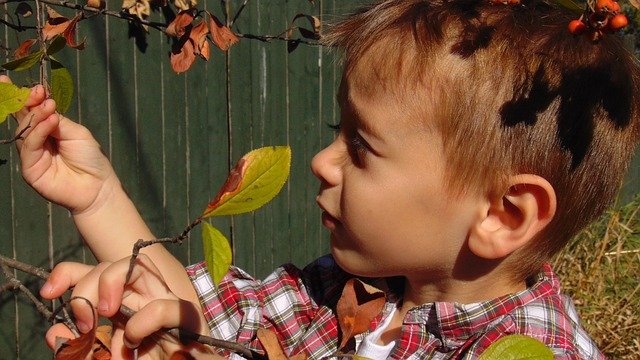Young children are fascinated with anything that stimulates their senses. Consider the newborn that is drawn to human faces and the sound of Mommy’s voice, or the toddler who delights in blowing and chasing bubbles, and the preschooler who can’t get enough of GAK or OOBLEK. These experiences not only delight multiple senses, they inspire curiosity and wonder.
Childhood should be filled with the kinds of experiences that engage the senses and challenge children to expand their thinking. Musings such as what will happen if…” should be a mantra in any early childhood setting. To observe a child and see the concentration on his face, or the deliberateness in his hand movements is utterly fascinating. As an adult, watching this exploration from the outside makes me wonder what this child is thinking and what is motivating him. I wonder about what this child is wondering about.
Will he figure out how to make the mobile move?
Will she discover how to make a bubble land on her hand without popping?
Will he find a way to re-create the sound of crashing blocks using the musical instruments?
Then of course, my thoughts turn to how I can support this exploration.
- What other materials can I provide to encourage the process of discovery?
- What provocations can I set up to continue to spark this child’s curiosity and wonder?
- How can I engage this child, either through an experience or a conversation, to learn more about what she is thinking or what motivates her?
- How can I support the process of discovery without taking over, gently finding just the right words or interactions to extend the learning?
I am constantly fascinated by the depth of a child’s thinking and understanding. While their language skills and vocabulary may not provide a means of expression, their actions certainly do. This takes me back to the look of concentration, the focus of their attention, or the engagement of their hands.
When I visit a program where the teachers share this fascination, it’s obvious. The wonder and curiosity of the teachers, about the children, is so clearly evident in the layout of the environment, or the documentation that is displayed. How a teacher or caregiver sets up an invitation for play and learning is directly related to the value that the caregiver places on capturing the hearts and minds of the children in their care.
I shared my excitement in a previous post about how fascinating it is to watch teachers truly engage with young children. I so truly enjoy watching teachers have conversations with children. I love to see their descriptions of various experiences through photos and written documentation. It’s especially gratifying for me to see (hear) the teacher’s voice in the documentation, opening the door to what makes that teacher wonder about the children. To see the reflections of the teachers, and of the children is so delightful. Margie Carter and Deb Curtis from Harvesting Resources have written great articles and books about this kind of reflective practice that engages curiosity and wonder in teachers.
Sometimes, I don’t have the opportunity to be in a program with a caregiver to see all of the engaging experiences that take place, but I get to live it second hand when these caregivers share stories during a workshop with me. I live for the opportunity to talk with caregivers about what inspires them, what creates that sense of curiosity and wonder within them, and what they can do to continue to engage and inspire the children in their care. So a shout out to all my teacher friends who have allowed me the opportunity to question and challenge them about why they do what they do. The questions aren’t always easy, and they don’t always lead to answers, but the process is invigorating for me. I hope it is for them too!
So tell me what inspires you? What creates a sense of curiosity and wonder in your work with young children? I’d love to hear your ideas!


Recent Comments